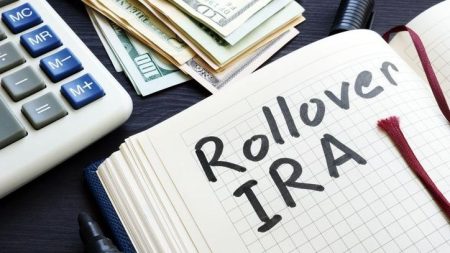The IRS has strict rules regarding when you can withdraw money from a tax-deferred retirement account like a 401(k). Doing so before age 59 ½ can trigger an early withdrawal penalty on top of income taxes. However, the IRS has designated specific situations in which a 401(k) account owner can qualify for penalty-free early withdrawals, including the birth of a child, paying for certain medical expenses and other emergencies. Here’s a closer look at how to avoid the early withdrawal penalty on your 401(k).
401(k) Early Withdrawal Penalty
The temptation to dip into retirement funds can be strong, especially during times of financial strain. However, it’s crucial to understand the implications of such actions for our future financial stability.
Distributions taken from a 401(k) before the age of 59 ½ are considered premature and are typically subject to an additional 10% tax penalty. This is in addition to any regular income tax that may be due on the distribution. The underlying rationale for these penalties is to foster a culture of saving for retirement among individuals and to deter the use of these funds for purposes other than retirement.
The 10% penalty serves as a significant deterrent to early withdrawals from 401(k) plans. It is calculated based on the total amount of the distribution and is payable upon filing an individual’s annual income tax return.
Say for example that you’re 35 years old and need $10,000 for a car down payment. You look toward your 401(k), which is worth $100,000, and figure withdrawing $10,000 is a no brainer. However, you’re not accounting for the full cost of the early withdrawal. Not only will you have to pay income taxes on the distribution, but you’ll also be hit with an additional $1,000 tax penalty for withdrawing money before age 59 ½.
When the Early Withdrawal Penalty Is Waived

Despite the stringent nature of this penalty, the IRS does recognize certain exceptions that allow for penalty-free withdrawals. To help you navigate these rules, here are 15 scenarios in which the early withdrawal penalty may be avoided. It’s also worth noting that other retirement accounts, such as traditional IRAs, have early withdrawal penalties, though the specifics and exceptions may vary.
Birth or Adoption of a Child
To pay for expenses related to the birth or adoption of a child, the IRS allows eligible parents to withdraw up to $5,000 from their 401(k) per qualified child without facing the 10% early withdrawal penalty. This exemption is applicable for distributions taken within one year of the child’s birth or the finalization of the adoption, providing a helping hand during this joyous, yet costly, time.
Death
In the event of a 401(k) account holder’s death, the beneficiaries can access the remaining funds without the early withdrawal penalty. This exemption applies regardless of the decedent’s age at the time of death. While the penalty is waived, beneficiaries may still face income taxes on the distributions, and the tax implications can vary.
Disability
The IRS exempts individuals who are permanently and totally disabled from the 10% early withdrawal penalty. The IRS’s definition of “permanently and totally disabled” requires that an individual be incapable of engaging in any substantial gainful activity due to a physical or mental impairment that is expected to result in death or to continue indefinitely. This exemption allows those facing severe disabilities to access their retirement funds to manage living expenses and healthcare needs, subject to IRS approval.
Divorce
During a divorce, a qualified domestic relations order (QDRO) can allow for the penalty-free distribution of 401(k) funds. A QDRO is a legal judgment that gives a former spouse or dependent the right to collect a portion of the retirement plan benefits. This legal instrument ensures that 401(k) withdrawals made in accordance with a QDRO during divorce proceedings are not subject to the early withdrawal penalty, providing financial clarity and fairness during the division of marital assets.
Recovering From a Disaster
Individuals affected by a federally declared disaster may be eligible to withdraw up to $22,000 from their 401(k) without incurring the early withdrawal penalty. To qualify for this exemption, affected individuals must provide documentation that verifies their residency in the disaster area and the economic losses they have suffered.
Emergency Personal Expense
The IRS may waive the 10% early withdrawal penalty for distributions of up to $1,000 or vested account balances over $1,000 – whichever is less – that’s taken in response to a personal or family emergency.
Domestic Abuse Victims
Those who have experienced domestic abuse may be exempt from the early withdrawal penalty on 401(k) distributions of up to $10,000 or 50% of their account – whichever is less.
First-Time Homebuyers
Under certain circumstances, first-time homebuyers could access funds early from their retirement accounts without incurring a penalty. This exception allows individuals to withdraw up to $10,000 from their traditional IRA or Roth IRA for the purchase, building, or rebuilding of a first home. To get the penalty waived, the distribution must be used within 120 days of receipt and meet the IRS definition of a first-time homebuyer, which typically means not having owned a home in the previous three years.
Series of Substantially Equal Payments (SEPP)
Account holders can avoid the early withdrawal penalty by opting for SEPP based on their life expectancy or the joint life expectancy of themselves and their beneficiary. To initiate SEPP, one must use an IRS-approved calculation method and continue the withdrawals for at least five years or until reaching age 59 ½, whichever is longer. Deviating from this schedule can result in retroactive penalties, highlighting the importance of adherence.
IRS Levies
Consider a scenario where you’re faced with an IRS levy due to unpaid taxes. In such cases, the early withdrawal penalty does not apply to 401(k) distributions taken specifically to satisfy the tax debt. An IRS levy involves the legal seizure of property to cover unpaid taxes, and this exemption allows individuals to fulfill their tax obligations without the additional financial burden of an early withdrawal penalty.
Military Service
Certain military reservists who are called up to active duty may qualify for an exemption from the early withdrawal penalty. Eligibility for this exemption depends on the nature and duration of the military service, and it’s available to reservists called to duty for more than 179 days or for an indefinite period, provided the distribution is taken during the active duty period.
Rollovers
Rollovers are a vital tool for preserving retirement savings. The process of transferring funds from one qualified retirement plan to another, such as from a 401(k) to an IRA, can be penalty-free when done correctly within a 60-day period. This provision encourages the preservation of retirement savings while allowing for flexibility in managing retirement accounts.
Certain Medical Expenses
The financial burden of medical expenses can be overwhelming. Withdrawals from a 401(k) to pay for unreimbursed medical expenses that exceed 7.5% of an individual’s adjusted gross income (AGI) may be exempt from the early withdrawal penalty. Qualified medical expenses include payments for the diagnosis, cure, mitigation, treatment or prevention of disease.
Leaving Your Job
Individuals who leave their job during or after the year they reach age 55 may be exempt from the early withdrawal penalty on 401(k) distributions from the plan associated with the job they left. Known as the “Rule of 55,” this rule applies only to the 401(k) from the most recent employer and is subject to certain conditions.
Terminal Illness
The diagnosis of a terminal illness brings both emotional and financial impact may enable you to make penalty-free withdrawals from their 401(k) to address their needs during this critical time. To qualify for this exemption, documentation from a physician verifying the condition is typically required.
How to Avoid Early Withdrawals From Your 401(k)

The obvious way to avoid the 10% early withdrawal penalty is to altogether avoid taking early distributions from your 401(k). This may be easier said than done, especially when faced with an emergency or sudden expense. That’s why planning for these situations or having more tax-efficient alternatives is worthwhile.
Build an Emergency Fund
Ideally, your 401(k) should be allocated exclusively for your retirement savings. Keep any money you may need to cover an emergent expense in a savings account. Having an emergency fund on hand can help you deal with sudden expenses, allowing you to avoid the inconvenience of making early withdrawals from your 401(k).
Experts recommend having enough cash in an emergency fund to cover three to six months’ worth of living expenses. If you contribute to a tax-advantaged retirement account but don’t have any emergency savings, you may want to consider pausing those contributions (or contribute just enough to qualify for an employer match) and build up your emergency fund. However, that’s something you may want to talk over with a financial advisor.
401(k) Loans
A 401(k) loan is a provision within many 401(k) retirement plans that allows an employee to borrow funds to address immediate and severe financial needs. This type of loan is distinct from a hardship withdrawal, which is an irreversible distribution of funds that typically cannot be replenished.
A 401(k) loan, conversely, is a sum borrowed against the balance of one’s 401(k) and is subject to repayment with interest back into the individual’s retirement account. This repayment usually occurs over a five-year period, and generally begins with the payroll immediately following the loan as a payroll deduction. The distinction between a loan and a withdrawal is significant, as loans do not trigger the same taxes and penalties as withdrawals, making them a potentially more favorable option for employees in dire financial straits.
The qualifying circumstances for a hardship withdrawal, as defined by the IRS, are as follows:
- Medical expenses for the employee or their immediate family
- Costs associated with the purchase of a principal residence
- Tuition and related educational fees
- Payments necessary to avert eviction or foreclosure on a principal residence
- Burial or funeral expenses
- Certain expenses for the repair of damage to the employee’s principal residence
Bottom Line
While the IRS imposes a 10% penalty on early withdrawals from some retirement plans to encourage saving for retirement, it also recognizes life’s unpredictable financial challenges by allowing for penalty exemptions under specific circumstances. Certain medical expenses, disability and various life events may exempt you from the 401(k) early withdrawal penalty. Having an emergency fund or taking a 401(k) loan are other strategies for avoiding the early withdrawal penalty.
Retirement Planning Tips
- Required minimum distributions (RMDs) are mandatory withdrawals from tax-deferred retirement accounts that begin at age 73 (or 75 for people who turn 74 after Dec. 31, 2032). These distributions, which get calculated based on the value of your accounts on Dec. 31 of the previous year, add to your taxable income and increase your tax liability. Failing to take the correct RMD can result in a tax penalty. As a result, it’s important to plan for them. SmartAsset’s RMD calculator could help you estimate how much your first RMD will be and when it must be taken by.
- A financial advisor can help you plan and save for retirement. Finding a financial advisor doesn’t have to be hard. SmartAsset’s free tool matches you with up to three vetted financial advisors who serve your area, and you can have a free introductory call with your advisor matches to decide which one you feel is right for you. If you’re ready to find an advisor who can help you achieve your financial goals, get started now.
Photo credit: ©iStock.com/designer491, ©iStock.com/MStudioImages, ©iStock.com/PeopleImages
Read the full article here
















